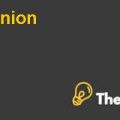DESIGNING A GLOBAL SUPPLY CHAIN IN NEW ZEALAND: Case Solution
REGULATORY ENVIRONMENT:
Philippines being a member of Association of Southeast Asian nations, International Monetary Fund, World Trade Organization and World Bank developed an improved regulatory framework. The Philippines has developed the strong international ties with China, the United States, Hong Kong and other European Union countries. Philippines has also signed free trade agreement (FTA) with many countries including New Zealand as well. Imports and exports of Philippines are regulated by Tariff and Custom Code of Philippines. These strict regulated environment provides smooth and transparent transactions between countries with less regulatory disruption. Regulations regarding documentary requirement, prohibited items, Tariff classification and import/export duties, Product standard and labelling requirements are clearly defined by the Philippines government.
PROMINENET RULES AND REGULATION:
Following are the imminent rules and regulation applied to countries trading with Philippines:
- Obtaining an importers clearance certificate (ICC) from the Bureau of Internal Revenue (BIR). The ICC will only be issued to the applicants who are in regulation with the prevailing laws and regulations.
- The ICC is issued within 5 working days which is the timeline for ICC.
- The documents which are required for import are commercial invoice, bill of lading, certificate of origin, packing list and special certificates, which provides an idea of sound regulatory environment.
- Philippines define clearly three types of goods which includes; importable commodities, regulated commodities and prohibited items. These clearly defined categories helps importer to import goods with less complications.
- Tariff classification and import export duties enables the importer to be aware of all the costs related to importing goods and help the importer to negotiate goods accordingly. These import rates are clearly defined as special preferential rates, preferential rates and ordinary rates
- Product standards and labelling requirements are also clearly defined by the Philippines government.
- The Philippine National Trade Repository serves both local and foreign importers, exporters and individuals in need of Philippines trade information.
- The Republic act no. 8494 states that guarantee of loans, insurance, technical assistance, execution of expansion programs, formulation of projects proposals and further services to facilitate export will be provided by the government.
(Import.Export procefures of philippines, 2017); (Philippines export import credit agency, 2017)
ANALYSIS OF COMPLETE GLOBAL SUPPLY CHAIN:
Following is the process of global supply chain:
PROCUREMENT PRACTICE:
Philippines is located nearby New Zealand, both the countries are located on islands. The geographical location has separated both the countries with an ocean between them. As both the countries are located near to each other, it will be good to use economic analysis methods such as cost benefit analysis and cost utility analysis. Procurement practice will allow Philliphines to be more cost efficient because it will allow us to find best vendor at best price possible. In this approach the company should focus on cost benefit analysis because the exporting country will benefit from transportation cost so the cost to importing country should also be less in comparison with countries who are far away from New Zealand.
IMPORTANT SOURCING POINTS WITHIN THE COUNTRY:
The importing country which is New Zealand should focus on sourcing points of Philippines from where it could get its desirable products at reasonable rates. This analysis of sourcing point will help the importing country’s company to determine where the competitive market for product and from where it can find best competitive price. This will assist the importing company to further enhance cost benefits by availing product at best possible low price.
THE LOGISTIC NETWORK:
The only logistic network on which both countries could rely on, is the sea route. Although company has two channels to select. These two options are by air or by sea. The option of selecting air network would be costly for exporting country which could in return charge higher price for the products delivered and importing company could get prices at less competitive prices. The sea network is suitable for the companies to be more cost efficient but the risk involved in sea logistic network is the threat of stormy condition and pirates. Sea routes also take more time to deliver the products to the importer which sometime delays the delivery of the product and exporter could face tariff or charges for delivering the product late. If importer thinks that the product demand is high and they could sell the product at higher prices if the product could reach before time than the importer can opt for air route and benefit from high demand scenario. (Logistics risk, n.d)
LOGISTIC INFRASTUCTURE:
The logistic infrastructure which we will focus upon for these two countries would be shipyards and airports. The shipyard and airport of New Zealand and Philippines are well structured and developed as both the countries are located on islands the ships could be sent to any city of the New Zealand directly if that city has a port or shipyard. As our firm is located at outside of Hamilton city we could get our product directly at shipyard of Hamilton or Auckland. As both the cities are located on islands, their airports are well structured but with less capacity for storage. This less capacity could result in high tariffs in case products are delivered late or collected late. (Logistics risk, n.d)
RISKS IN THE LOGISTICS:
The risk is increased when the products are imported from Philippines. Philippines is on a developing phase of regulations which could increase the risk of logistic threats. The logistics risks includes inventory and supply, compliance and safety, regulatory compliance, chain of responsibility and dangerous goods regulatory risk.
These increasing logistic risks could be protected by buying insurance policies but some logistic risks cannot be protected such as clearing and forwarding process due to increased regulatory environment or due to inefficient and corrupt regulatory system. For example, in Australia logistic risk is a huge threat to businesses because of increasing regulatory threats such as chain of responsibility. Chain of responsibility is the process of handling and clearing goods from exporter to importer with several processing elements involved, increasing the risk of receiving the product late. The chain of responsibility risk is higher for New Zealand which is an importing country and could face delays due to strict regulations. (Chain of Responsibility, n.d); (logistics risk, n.d)..............
This is just a sample partical work. Please place the order on the website to get your own originally done case solution.













